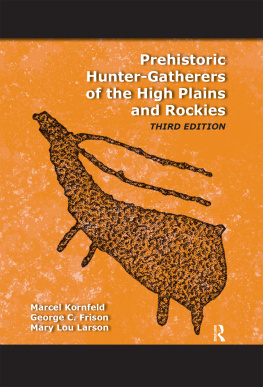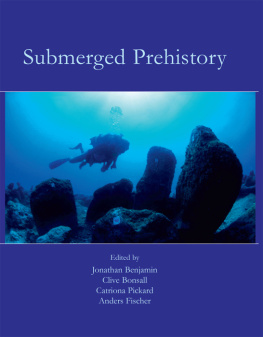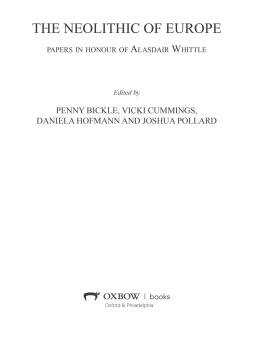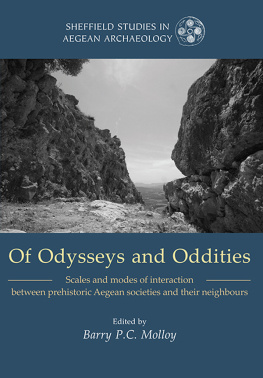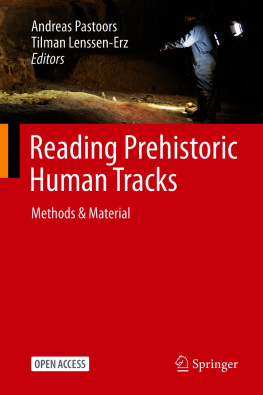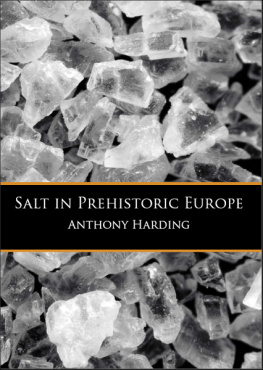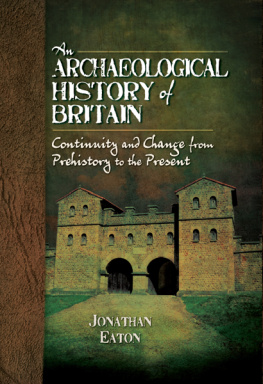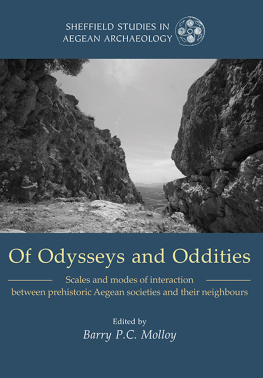
PREHISTORIC
EUROPE
PREHISTORIC
EUROPE
Timothy Champion
Clive Gamble
Stephen Shennan
Alasdair Whittle


Originally published in 1984 by Academic Press under ISBN 0-12-167552-1
First published 2009 by Left Coast Press, Inc.
Published 2016 by Routledge
2 Park Square, Milton Park, Abingdon, Oxon OX14 4RN
711 Third Avenue, New York, NY 10017, USA
Routledge is an imprint of the Taylor & Francis Group, an informa business
Copyright 2009 Taylor & Francis
All rights reserved. No part of this book may be reprinted or reproduced or utilised in any form or by any electronic, mechanical, or other means, now known or hereafter invented, including photocopying and recording, or in any information storage or retrieval system, without permission in writing from the publishers.
Notice:
Product or corporate names may be trademarks or registered trademarks, and are used only for identification and explanation without intent to infringe.
Library of Congress Cataloguing-in-Publication Data available from the publisher.
ISBN 13: 978-1-59874-463-7 paperback
This book owes its existence to a need felt, we believe, by many people who are trying to teach European prehistory, for an elementary textbook suitable for students taking their first course in the subject with little or no previous experience in archaeology. Several years of struggling with the literature in its present form finally convinced us that there was no alternative but to write it for ourselves. The primary evidence, where published at all, is notoriously scattered through a bewildering range of books, pamphlets and journals, written in almost every European language and in any case frequently unobtainable except in a few specialist libraries. For some areas and periods secondary works, sometimes excellent, exist, but their coverage is far from complete and they are mostly at too advanced a level for first-year students. Some general books exist, but none covers the chronological and geographical range that we thought desirable, with a proper concentration on the themes characteristic of modern archaeology at a level suitable for our intended readership.
It was clear from the outset that the book should have as long a chronological range as possible. The earliest evidence for man in Europe forms an obvious starting point, but the finishing point is more problematical. The unfortunate distinction between classical and prehistoric archaeology, with the late Bronze Age and early Iron Age of Italy and Greece sitting uncomfortably on the fence, has obscured the essentially similar nature of developments in Mediterranean and temperate Europe, and we have therefore adopted the somewhat unusual path of including some periods that many would not regard as prehistoric. On the other hand, from a northern European point of view, prehistory would not end until well into the second half of the first millennium AD, and we have therefore, by ending our coverage at the beginning of that millennium, omitted some periods that could be thought prehistoric. There is perhaps no solution to this problem that would satisfy everyone.
It was also clear that within the scope of this book it would not be possible to expound and illustrate the full complexities of the established regional culture sequences of prehistoric Europe. It has not been our intention to do that, nor would we regard it as an essential or even desirable aim in such a book. We have no doubt, nevertheless, that we will still incur the criticism of some of our colleagues for paying too little attention to the material of Prehistoric Europe. Our answer is that it has not been possible since the days of Gordon Childe to do so on a European scale, that we have not been tempted to rewrite The Dawn of European Civilisation, and that such studies are often better pursued at a more advanced stage and through books dealing with particular periods and areas. We hope through the text, illustrations and chronological charts to be able to show the general nature of the existing evidence on which our arguments rest, and to provide a sufficient basis of information for students to be able to use the more detailed books satisfactorily.
We have chosen instead to organize our treatment of European prehistory around the discussion of certain themes, especially those which have been most prominent in recent research. This means, in particular, a study of settlement, subsistence, technology, exchange and social organization. In order to focus on these ideas, it has been more convenient to abandon the traditional Three Age System of Stone Age, Bronze Age and Iron Age for the main division of the book into chapters, though the terms remain invaluable for other purposes.
We have not attempted to impose any sort of undue uniformity on our treatment of the various themes in the different periods. The very varied nature of the evidence and of research makes this impossible. Thus within each chapter we have not tried to give complete geographical coverage, because in many areas the evidence does not exist or has not been adequately exploited. Similarly, there are differences between the various chapters in the importance attached to each theme. In the earliest periods studies of subsistence and technology predominate, and the evolution of human society has not always formed a major focus of research. At the other extreme, studies of subsistence in the first millennium, though becoming more common, are not as numerous and have not had the impact that they have in earlier post-glacial times, and studies of social organization have been correspondingly more important. Within the general approach adopted for the book as a whole, we have therefore allowed the particular circumstances of the current nature of research to determine the priority of different themes.
The sheer quantity of information on prehistoric Europe is now so great that it is almost impossible for a single person to have an equal command of it all; hence the collaboration of four authors. The initial idea and subsequent organization and editing were the responsibility of one person (TCC) and individual chapters were written by single authors. Drafts were circulated for comment by other authors and we hope we have in this way achieved a certain uniformity, coherence and continuity, and that, despite the inevitable differences in style, the joints are not too disturbing to the reader. It is part of the concept of this book that it should be presented as a whole, as the collaborative work of the authors rather than as an edited collection of papers.
We would like to thank Academic Press for their help and patience in completing a somewhat complex operation, Martin Oake and Michael Jones for producing many of the drawings, and a variety of people, especially Susan Stephenson, Anke Elborn and Sabina Thompson, whose typing skills made order out of chaos. We hope that they think it has all been worthwhile.
is from an original by Roger Gorringe.
Contents

Fig. 1.1 Europe, showing modern political boundaries.
The foundations of serious prehistoric research were laid in the early nineteenth century, with the establishment of the antiquity of man and the development of the Three Age System for ordering the archaeological record. The quantity of material increased rapidly in the nineteenth century, and local sequences were worked out. This enabled a synthesis of European prehistory to be written by Childe, though the interpretation of the past was heavily influenced by ideas of diffusion from the east. Radiocarbon dating provided an independent means of establishing a prehistoric chronology, and this revolutionized the pattern of Europes past.
Next page

